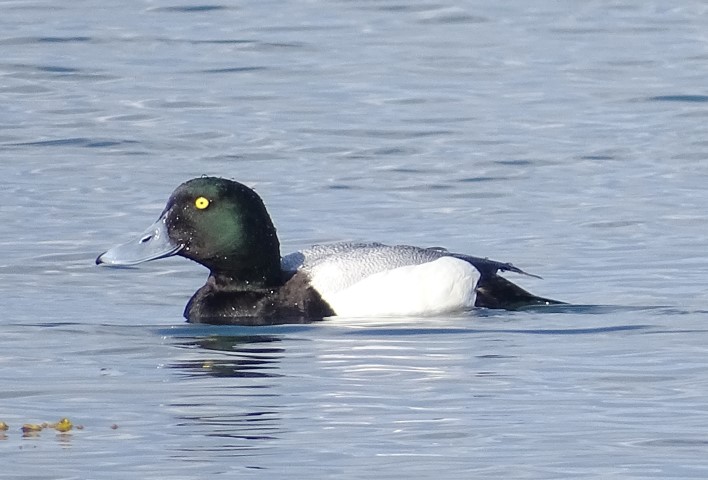Scaup
Reports

From 14-16 May this year a male Scaup was reported from the north end of Brodick Bay. There were good views of this diving duck from the putting green and from Fisherman’s Walk. This occasional winter visitor to Arran seemed to be lingering.
Scaup are diving ducks with a resemblance to tufted ducks. Males have black heads, shoulder and breast, white flanks, grey back and a black tail. Females are brown, with characteristic white patches around the base of the bill. In flight they show white patches along the length of the trailing edge of the wing. The features of the male in Brodick Bay were captured well in Colin Cowley’s photograph.
Scaup dive to obtain food, which they eat on the surface. They mainly eat shellfish, aquatic plants, and aquatic insects. With the Scaup’s webbed feet and weight, it can dive up to 6 metres (20 ft) and can stay submerged for up to a minute, allowing it to reach food sources that are unobtainable to some other diving duck.
The name Scaup? One suggestion is that it comes from scalp another name for “bed of shellfish”. First known use of the word is in 1797.